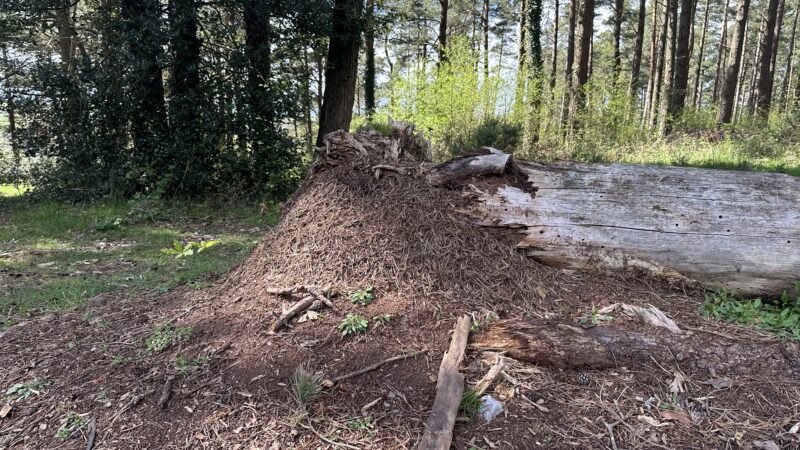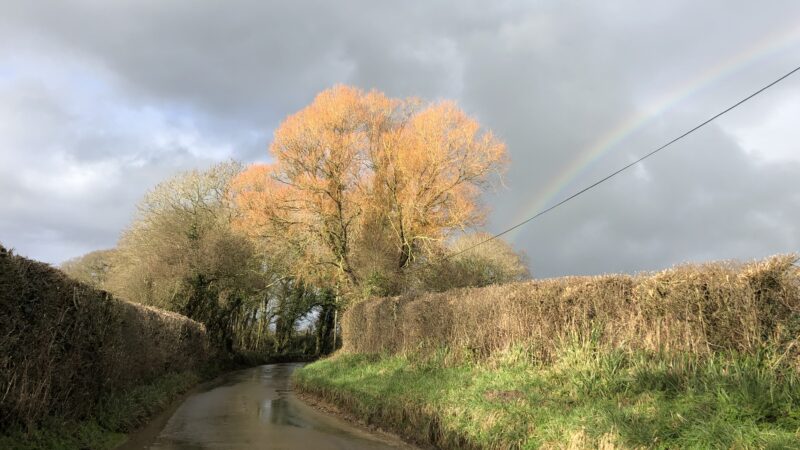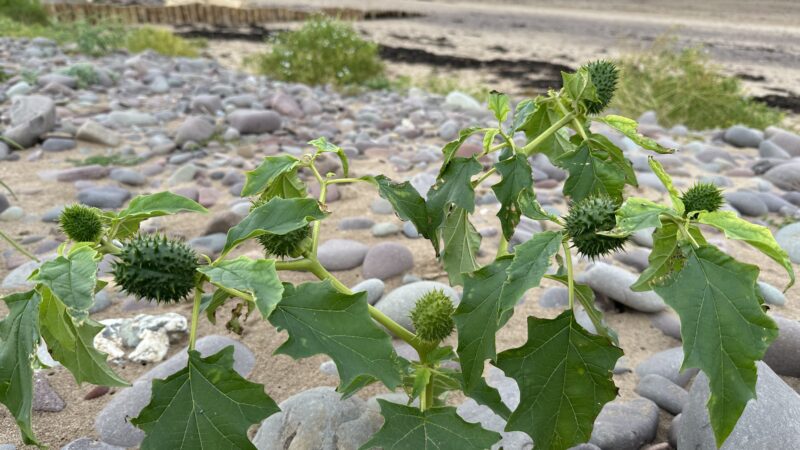Bawdy fern joke takes the biscuit
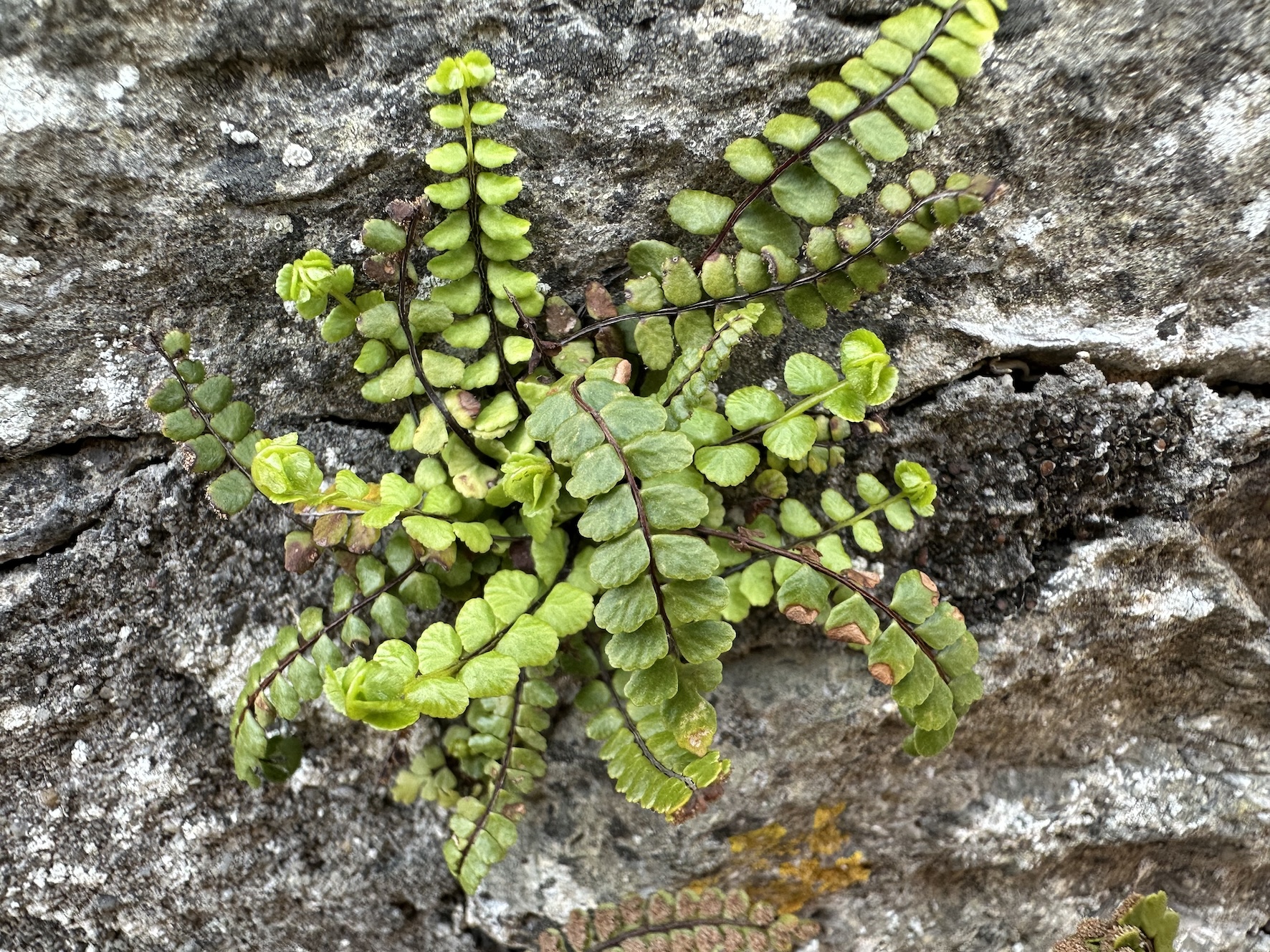
The modest clumps of fern clustering on the wall have a strangely reptilian appearance. Their short, slightly wavy green fronds with blackish central stems seem frozen in mid-writhe, as if they are the tails of lizards disappearing into cracks.
Maidenhair spleenwort is one of the commonest small ferns. It grows in stony places almost worldwide, with many subspecies and hybrids. The type found most often in the UK thrives on limestone (Asplenium trichomanes subspecies quadrivalens). It’s widespread in towns, where the damp, gritty, lime-based mortar of old buildings provides an ideal habitat similar to mountain scree. Shopping in Bridport, I notice it growing on the boundary of a public car park.
The spleenwort part of its name derives from traditional herbal medicine, from when it was used to treat a variety of internal ailments. But why “maidenhair”? The fat, square pinnae on each side of the central rachis look more like scales, or tiny green toenails, than hair. Some have fibrous brown patches on their underside, like tiny, frayed coir doormats. These are the sori, which release drifting, microscopic spores, invisibly engendering new plants.
The maidenhair allusion was inspired by another phase of its life cycle. Although it is evergreen, individual fronds die off over time and shed their pinnae, leaving tough, spindly threads of stem. When clumped together in luxuriant, wiry tufts on a mound of rhizome, it’s obvious what is being referenced. This must be one of the oldest jokes in botany, dating back to the ancient Greek philosopher and naturalist Theophrastus, who gave the fern its “trichomanes” epithet, a compound word meaning hairy or bristly.
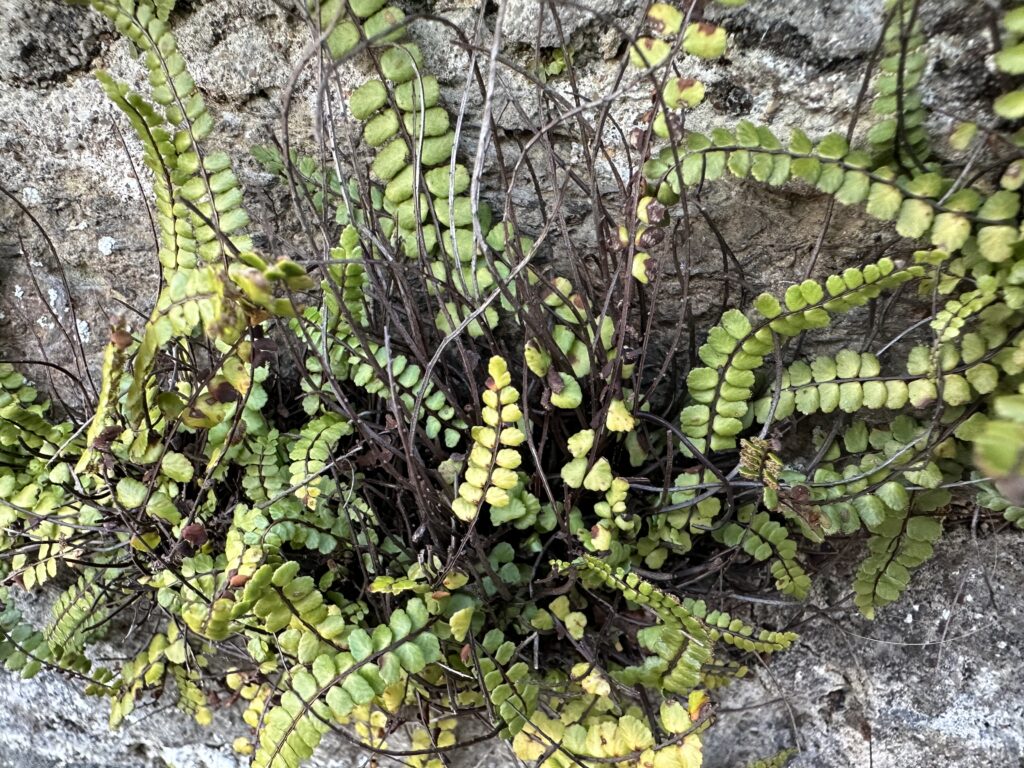
The bawdy reference did not lessen the popularity of this and other maidenhairs during the Victorian period, when pteridomania, or fern madness, was at its height. Thousands of plants were collected, and the countryside stripped of sought‑after species.
Back home from my shopping trip, I make a cup of tea and treat myself to a custard cream biscuit, one of the sweeter legacies of pteridomania. The stylised curlicue patterns stamped into its side represent ferns unfolding and are part of its original Edwardian design, symbolising friendship and good times.
First published in The Guardian’s Country Diary, 3 April 2025.
